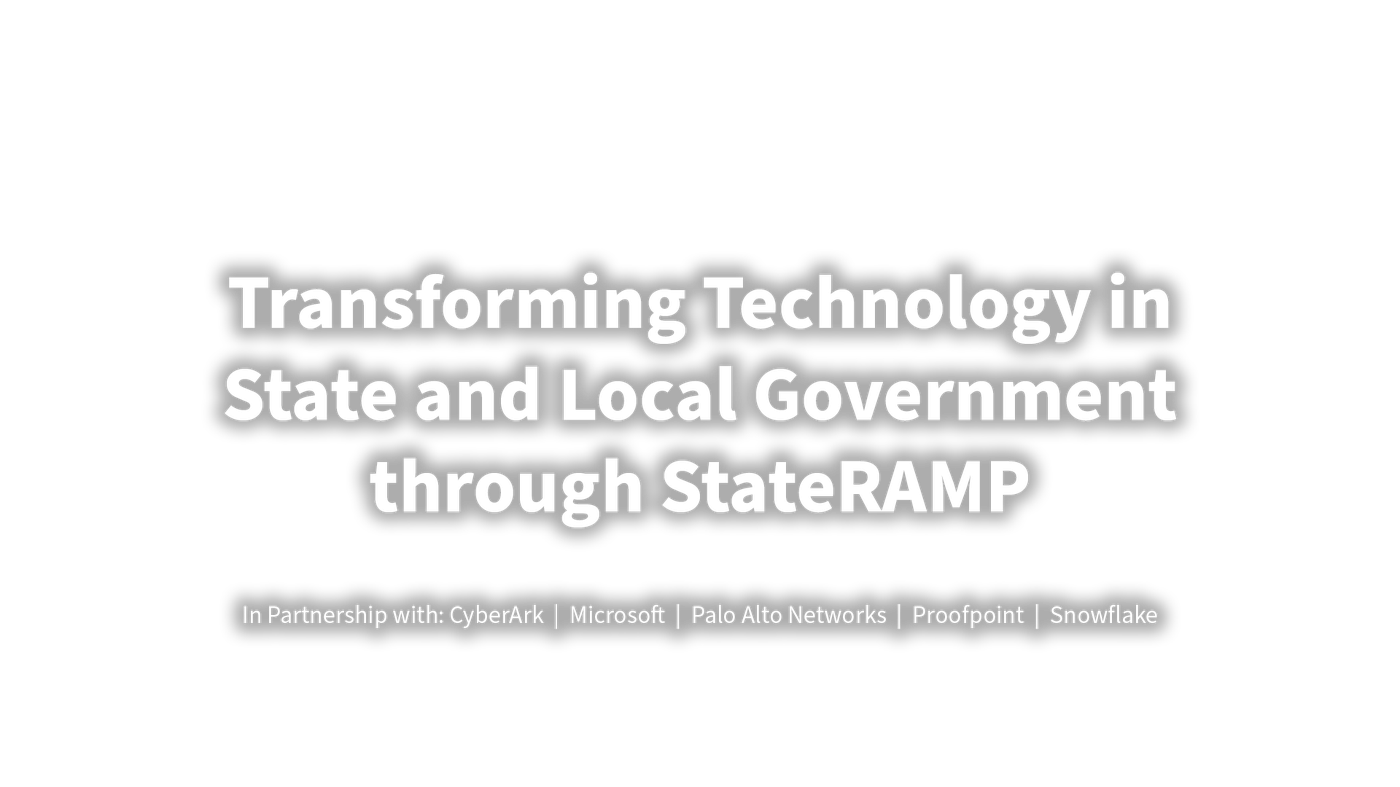
State and Local Governments play a crucial role in delivering essential services to their constituents. Carahsoft is committed to supporting these vital institutions by offering technology solutions through StateRAMP. This program ensures that cloud solutions adhere to the highest security standards, which is critical for the integrity of Government operations.
By partnering with StateRAMP authorized vendors, Carahsoft provides IT solutions that are specifically tailored to meet the needs of State and Local departments. Whether enhancing construction projects, empowering law enforcement agencies, advancing educational initiatives or supporting other public services, our collaboration ensures that Governments have the secure, effective technology they need to serve their constituents efficiently.

Microsoft
Roadmap for Government AI Adoption
Every government is on its own journey to adopting artificial intelligence solutions. This roadmap defines common steps governments should consider to start responsibly benefiting from AI innovations. They can be performed in any order.
Learn 5 steps governments can take to responsibly benefit from AI.

Microsoft
State and Local Government AI Roadmap
This paper defines a roadmap for government adoption of AI by identifying the government policies and operations most affected by the new technology and providing readiness guidance based on the work of leading governments that have already deployed AI-based solutions.
Discover 5 steps to build an AI strategy and roadmap for your agency.

Palo Alto Networks
The Business Value of Palo Alto Networks Cybersecurity Platforms
IDC interviewed organizations using Palo Alto Networks cybersecurity platform solutions to understand the impact on their security capabilities, security operations, and business activities. This business value study looks to measure outcomes of the Palo Alto Networks cybersecurity platforms, using return on investment as the metric of choice. Read further to learn the results.

Palo Alto Networks
Providing Optimal Cloud Security Outcomes Through StateRAMP Blog
In this blog, learn how Palo Alto Networks reaches a significant milestone as their commitment to comprehensive security achieves the largest number of StateRAMP marketplace approved cybersecurity offerings.

Proofpoint
How Proofpoint Helps Protect Local Governments
Proofpoint can help protect local governments from threats. Our people-centric approach to cyber defense focuses on protecting the individuals most likely to be targeted.

Proofpoint
Protecting Against Identity-Based Attacks in State and Local Governments
Proofpoint partnered with IDC Research to learn how cyber criminals are exploiting identity in state and local governments—and what these agencies can do about it.

Snowflake
5 Questions to Ask When Considering a Migration to Snowflake
Choose a scalable, efficient alternative to complex legacy databases. In this ebook, we outline five key questions enterprises should ask as they assess the need for migration and their readiness to make the move.

Snowflake
Leverage Document AI to Ease Records Management in the DoD
How to simplify a securely automated records management system. This paper discusses the capabilities of Snowflake Document AI and explores the Snowflake approach to meeting the AI/ML and LLM requirements.

CyberArk
How Endpoint Privilege Management Fulfills Federal Mandates
Agencies have been directed to place increased focus on endpoint detection and response (EDR) and these approaches are vital, but by definition they provide a limited and reactive capability that only applies after an adversary has already enjoyed some level of success. A more proactive strategy is to use endpoint privilege security as a preventive approach. Download this whitepaper to learn how to navigate endpoint privilege security in today’s Zero Trust environments.

CyberArk
Addressing Zero Trust for Government: The Role of Identity Security
Governments around the world are enacting stronger cybersecurity mandates in which Zero Trust features as a central theme. Download this whitepaper for practical advice for a successful transition to Zero Trust.


